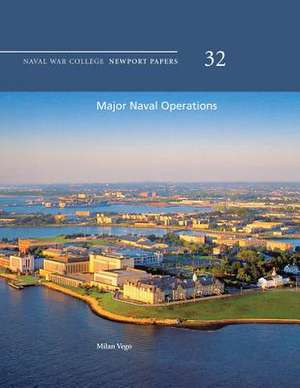Major Naval Operations
Autor Milan Vego, Naval War College Pressen Limba Engleză Paperback
Preț: 123.34 lei
Nou
Puncte Express: 185
Preț estimativ în valută:
23.60€ • 24.50$ • 19.68£
23.60€ • 24.50$ • 19.68£
Carte disponibilă
Livrare economică 03-17 martie
Preluare comenzi: 021 569.72.76
Specificații
ISBN-13: 9781478391807
ISBN-10: 1478391804
Pagini: 152
Dimensiuni: 216 x 280 x 8 mm
Greutate: 0.37 kg
Editura: CREATESPACE
ISBN-10: 1478391804
Pagini: 152
Dimensiuni: 216 x 280 x 8 mm
Greutate: 0.37 kg
Editura: CREATESPACE
